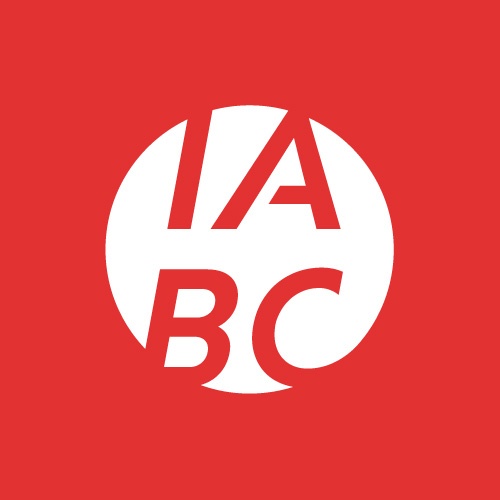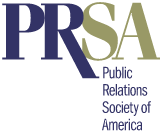PR and journalism do have some similarities, but . . .
Although the ethical guidelines of the Society of Professional Journalists (SPJ), the Public Relations Society of America (PRSA), and the International Association of Business Communicators (IABC), which encompasses public relations and a number of other communication specialties, agree on the importance and value of such concepts as truth, accuracy, fairness, human rights, freedom of speech, and democratic principles, they aren't in perfect harmony and don't agree on everything. They certainly don't agree on the everyday workings of their professions.
In reality, the underlying differences between public relations and journalism are more basic and far more critical than the similarities in what they value. According to their own professional standards and codes of good practices, there are fundamental differences in whom they represent and whose well-being they most directly serve.
- Journalism serves the general public. And, journalists are expected to act in best interests of the public even if those actions could have a detrimental effect on their employers. Their emphasis must always be the public good.
- Public relations, in contrast, serves the specific organization or client that pays its hired practitioners to build and manage its relationships with its publics. These public relations practitioners, therefore, owe their greatest loyalty to the organization/client that employs them and constantly strive to achieve its goals. This does not, however, mean they necessarily have a "the public be damned" attitude or work contrary to the public good.
Principled public relations practitioners and their professional organizations, including the PRSA and the IABC, are quick to add the caveat that even though public relations is meant to serve the needs of its clients/patrons, its practitioners are simultaneously expected to refrain from any activity that could have a deterimental effect on the general public.
But, given the fundamental difference in orientation between journalists and public relations practitioners, it's inevitable that the standards that govern their actions need to be different. As noted above, this doesn't mean either set of standards is inherently better or worse than the other. Nor does it mean that one professional is more or less ethical than the other. It just means that working professionals should be judged by the standards of their own profession, not those of another field.
- Some actions that may be appropriate and commendably ethical for a public relations practitioner could be viewed very differently and even condemned as unethical by the Socity of Professional Journalists if they were performed by a journalist.
- Conversely, some actions that might be highly regarded when performed by a journalist, could be considered inappropriate, unprofessional, or even unethical by the PRSA or the IABC if they were performed by a public relations professional.
Journalism is primarily meant to serve the public's right to know.
Society of Professional Journalists Code of Ethics
http://www.spj.org/ethicscode.asp
The best way to fully understand the differences between journalism and public relations ethics is to begin by reading the Society of Professional Journalists (SPJ) Code of Ethics. It's prominently featured on the SPJ website.
It outlines and explains the mainstream professional view of what are currently considered to be the acceptable norms of behavior for reporters, photographers, editors and other journalists working in the United States. But, don't jump immediately to the lists of prohibited behaviors, and don't focus solely on the distinctions between what's acceptable and what's unacceptable. Start by carefully reading the preamble to get a clear sense of to whom the professional journalists say they owe their primary allegiance and what they see as their over-riding purpose. Then, go on to consider the values that the journalists say they espouse in more detail and with an appropriate context for fully understanding them.
If you accept this code at face value, it's obvious that the perceived needs and interests of the public will always come first. They are even supposed to be placed before the needs and interests of the journalists' employers.
Public relations is primarily meant to serve its clients' needs for better relationships.
PRSA Code of Professional Standards
http://www.prsa.org/resource-library/ethics/code-of-ethics
IABC Code of Ethics for Professional Communicators
https://www.iabc.com/about-us/governance/code-of-ethics
Today, the clearest evidence of the difference between journalism and public relations' ethical standards and values will be found in the Public Relations Society of America's Code of Professional Standards. Note, however, that these differences are now less clearly stated and much more politically correct than they were in 20th century versions of the Code.
The current Code is also more verbose than previous versions. But, if you wade through several paragraphs of introductory comments, you'll get to a section headed: PRSA Member Statement of Professional Values. It "presents the core values of PRSA members and, more broadly, of the public relations profession." It doesn't expressly say so, but it's reasonable to assume that these core values were listed in order of importance since they obviously aren't listed alphabetically.
The first core value is advocacy, which according to PRSA means: "We serve the public interest by acting as responsible advocates for those we represent. We provide a voice in the marketplace of ideas, facts, and viewpoints to aid informed public debate." This clearly indicates that meeting the needs of clients/employers is the primary role public relations. In deference to political correctness -- and the public relations of PRSA itself -- it also notes that this advocacy should be done responsibly and in ways that inform the public.
Other public relations related organizations' codes of ethics used to be similarly explicit, but they have all undergone dramatic revision -- and, in my personal opinion, watering down -- since the turn of the century. They now seem less direct and less willing to admit public relations' role as an advocate for its clients. They also seem to have adopted an over-inflated and perhaps unrealistic emphasis on "the public welfare" and political correctness.
The International Association of Business Communicators Code of Ethics is a good example of this. Pre-1995 versions of the IABC Code were similar to, albeit a bit more tightly editted than, the current PRSA Code. It was written in the third person and spoke of practitioners in a collective sense. For instance, it said: "Communicators should encourage frequent communication and messages that are honest in their content, candid, accurate and appropriate to the needs of the organization and its audiences." (Note the acknowledgment of the importance of the client organization in that final clause.) The current IABC Code of Ethics for Professional Communicators has been reduced to 11 short, first-person statements starting with "I am honest." and ending with "I do not guarantee results that are beyond my power to deliver." There is no explicit reference to the practitioner's obligation to a client or an employer. It's all about the practitioner and what she/he does.
All three of these professional codes were updated for the 21st century.
Around the turn of the century many professional organizations, not just the PRSA, IABC, and SPJ, made sweeping changes in their long-standing codes of ethics. Most created a special committee to undertake a thorough and careful review of its code, draft revisions, and submit them to their entire membership for review and approval. It usually took a full year or, in some instances, longer.
In part, it was done because many of the codes were old and hadn't been reviewed or revised in decades. This meant that many of them had failed to take dramatic changes in communication technology and the increasing speed of modern life into account. They were way behind the times, and revisions were long overdue.
A second perhaps more compelling reason was a fear of lawsuits. During the 1990s there had been a few high-profile, very nasty, and very expensive lawsuits filed by disgruntled practitioners against professional organizations which had publicly censured them or imposed sanctions on them for violating their organization's ethical standards. The embarrassed and angry professionals claimed they were unfairly treated by the organizations and had suffered financially and reputationally from these actions. In some cases, the courts sided with the plaintiffs and ordered the organization that censured them to pay substantial damages. Not all of the cases went this way, but enough of them did to scare the professional organizations into taking a closer look at their codes of conduct and the ways they enforced them.
According to legal experts, many of organizational codes of standards and practices that existed at that time were "unenforceably vague" and/or included too little "due process" to fully protect the legal rights of alleged violators. And, as mentioned above, some were simply outdated and failed to address such modern communication technology as digital recording, video surveillance, data collection and retrieval, social media, and the Internet.
So, even though the revisions were long overdue, they were primarily driven by fear of the legal and financial repercussions, future lawsuits, and concern for the profession's image and reputation. They were, in short, made at least partially for public relations reasons.

![[scales]](../images/justice.gif)



